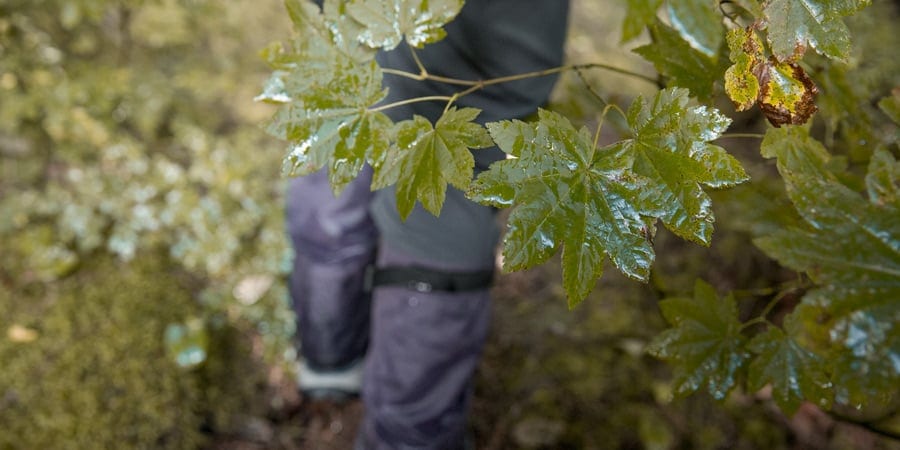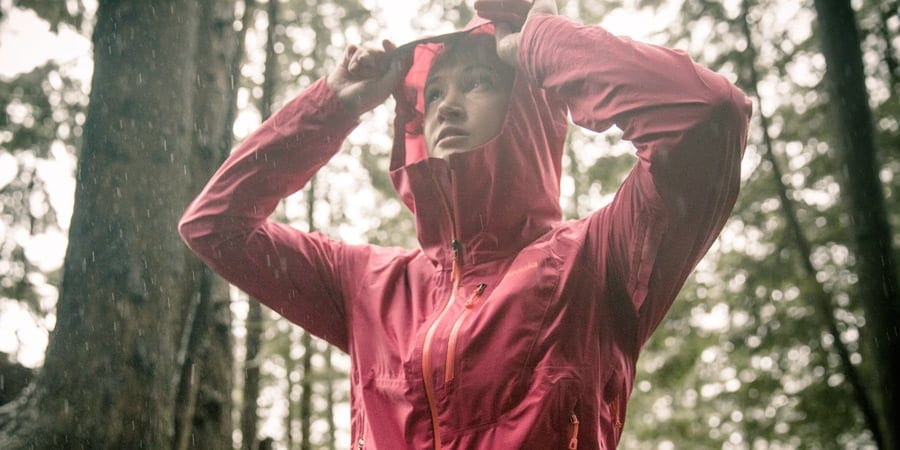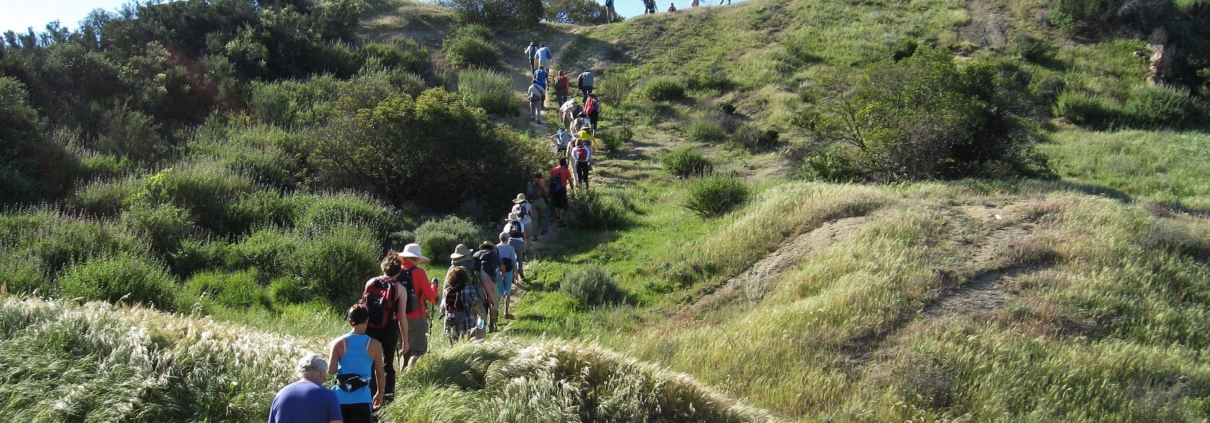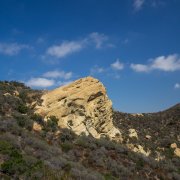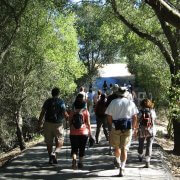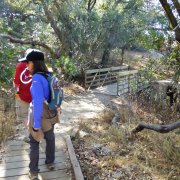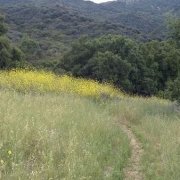How to clean a hydration bladder:
- Gather your cleaner, plus dish soap, brushes and drying aids.
- Mix hot water and cleaner, then fill the system.
- Soak and drain, then scrub and rinse.
- Allow to air dry.
Video: How to Clean a Hydration Bladder
Hydration Bladder Cleaning Supplies
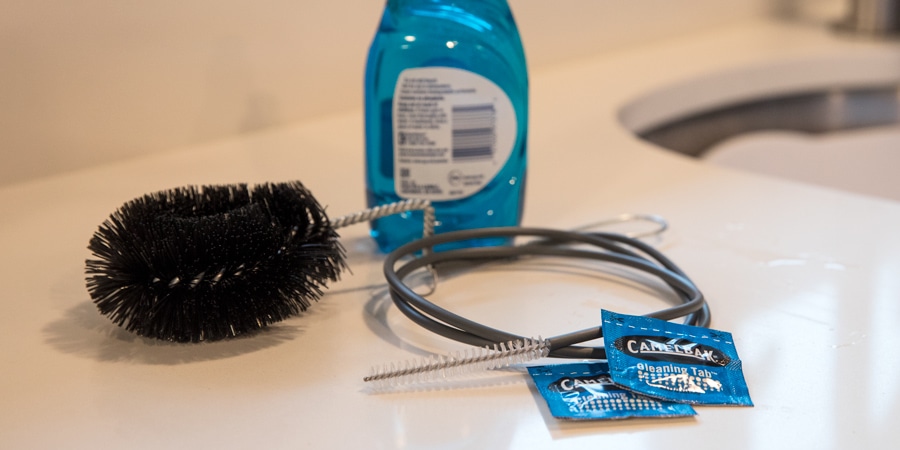
You’re likely to clean your reservoir more often if you have the right supplies on hand. Special equipment isn’t required, but if you want to make the job easier and more thorough, it’s helpful to have tools designed for the task.
Cleaning Solutions
You’ll need a mild dish soap, plus any of the following cleaning solutions:
- Reservoir cleaning tablets: no measuring needed. Just pop in a tablet specifically formulated to remove deposits that can build up in your hydration system over time.
- Baking soda: an all-around cleaner that’s effective against odors. Platypus recommends ¼ cup of baking soda in ¾ cups of water per liter of volume in your reservoir.
- Household bleach: kills bacteria and viruses. Platypus recommends using 2 to 5 drops of unscented household bleach per liter of water. Note that you can combine bleach and baking soda together for a more thorough cleaning.
- Lemon juice: helps neutralize really strong odors. Platypus recommends using ¼ cup of lemon juice per liter of water. It can also be combined with bleach and/or baking soda, but you need to point the reservoir opening away from you because lemon juice and baking soda produce a fizzy reaction.
- Denture-cleaning tablets: Though not specifically made for a hydration system, these are used by some people as inexpensive alternative cleaning tablets.
Cleaning Tools
- Cleaning brushes for reservoir and drinking tube: These can help you get into all the nooks and crannies more successfully.
- Kitchen scrubbing pad or scrub brush: You probably already have these at home, but they may not get to all the hard-to-reach places.
- A knotted cord: The cord has to be longer than your drinking tube and the knot should be large enough to fit snugly inside it. Simply pull the cord and knot through the tube a few times during the scrubbing process.
Drying Aids
The key is to keep the bladder fully open to allow air to circulate. It’s preferable to hang or place the bladder upside down so water can drip out.
- Reservoir hanger: Most will fit any bladder, but a few are only compatible with certain reservoir models.
- Clothespins: and a clothes hanger
- Kitchen whisk: Slip it inside to hold the bladder wide open.
- Paper towels: Stuff the reservoir with enough to hold it wide open.
Cleaning and Scrubbing a Hydration Bladder
This is a two-stage process. First, you mix and add the cleaning solution to neutralize nasties throughout the system. Then, you’ll wash with dish soap to help remove all residue of the cleaning solution.
Step One: Add the Cleaning Solution

- Fill the bladder with warm water (not so hot that it can scald you), add a cleaning tablet (or your home cleaning ingredients), seal it up and shake it.
- Lift the reservoir up, letting the tube drape into the sink; then pinch open the bite valve until you see water flowing out of it. This ensures the entire reservoir system is in contact with the cleaning solution.
- Set it aside and let soak. If you have reservoir-cleaning tablets, the instructions typically call for it to sit for five minutes; if you’re using a mixture of household ingredients, wait about 20 minutes. Then drain the system.
Step Two: Wash with Dish Soap, then Rinse

- Fill the bladder and tube again, this time with a mixture of warm water and a little dish soap.
- Scrub the interior of the bladder; then scrub the interior of the tube. This is easier if you remove the bite valve, which you can scrub separately.
- Thoroughly rinse everything.
Step Three: Air Drying

- Disassemble all pieces (tube, reservoir and bite valve).
- Place your reservoir on its hanger, or set it upright to dry.
- Hang your tube and set the bite valve aside. Some hangers have a tube clip; you can also drape the tube over a clothes hanger or a horizontal bar.
Though using the bathroom is tempting because you don’t mind a few drips there, it’s best to find a non-humid, out-of-the-way location for drying. Then give everything in the hydration system plenty of time to thoroughly dry, because putting it away with even a small amount of moisture inside invites mold growth.
Related Articles
Hydration Basics for Trail Running



